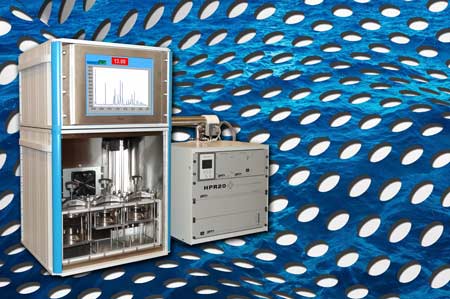

 The Versaperm Permeability Meter Mk VI is not mass-produced, as are some of the instruments on the market. Each instrument is carefully designed, crafted and manufactured to meet individual customer's detailed requirements specifications and requirements. This highly versatile vapour permeability instrument is extremely sensitive and accurate.
The Versaperm Permeability Meter Mk VI is not mass-produced, as are some of the instruments on the market. Each instrument is carefully designed, crafted and manufactured to meet individual customer's detailed requirements specifications and requirements. This highly versatile vapour permeability instrument is extremely sensitive and accurate.
Instrument Overview
The Versaperm Manometric Permeability Meter Mk VI operates by creating a controllable pressure difference across the sample using the gas under test. As the test gas flows through the sample, the rate of increase in pressure is used to calculate the gas permeation rate. The result is then displayed on the computer touch-screen for further analysis.
Application
High Sensitivity
Standards
The instrument is designed to comply with
Part 1: Differential-pressure methods.
 Triple Chamber
Triple Chamber
The instrument has three sample chambers enabling it to measure of a full set of samples in a single run period. The real-time graphical display of changing pressure provides easy monitoring for leak conditions, or the failure of any of the samples.
Computerised Control
The system's computerised control automates many parts of the process. Customised software is written for each instrument, to match any customer's requirements. For example, the instrument can be configured to perform a specific method for each type of sample. The presence of a built-in computer also provides data logging, storage, and networking. It also offers remote diagnostics and software updates.
Wide Range of Test Conditions
Rotary Vacuum Pump
The system is also supplied with a rotary vacuum pump, which reliably generates the low pressures required for testing.